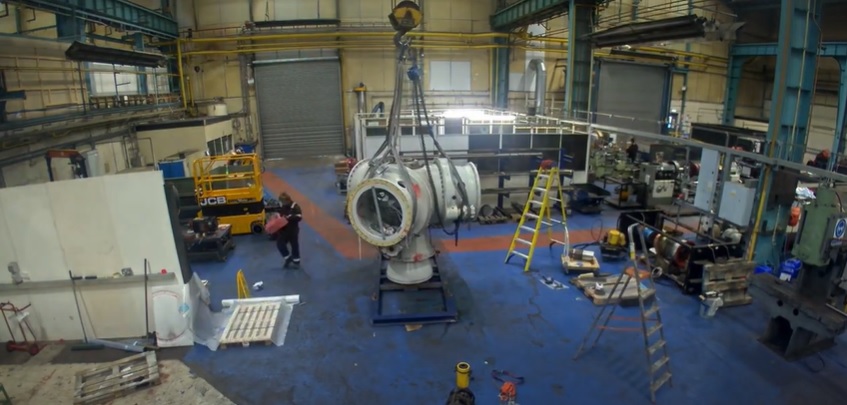Wind of Change
The “electrify everything” movement continues to drive innovation
The phrase “electrify everything” refers to the movement to replace our fossil-fuel economy with wind, solar, hydro, electric vehicles, heat pumps, and a robust electric grid that allows a two-way transfer of energy. Where wind energy is concerned, the drivetrain is the powerhouse of a turbine containing the generator and gearbox which converts torque into electricity. The design of a wind turbine gearbox is challenging due to the loading and environmental conditions in which the gearbox must operate. Torque from the rotor generates power, but the turbine rotor also applies large moments and forces to the wind-turbine drivetrain. It is important to ensure that the drivetrain effectively isolates the gearbox, or ensures the gearbox is designed to support these loads, otherwise internal gearbox components can become severely misaligned. This can lead to stress concentrations and failures.
Most wind turbine drivetrains currently use generators that are connected to gearboxes, which speed up the rotation from the relatively slow speed of the turbine’s blades (typically 5–15 rpm for a modern machine) to the high speeds (1,000–1,800 rpm) needed to generate electricity using a high-speed induction generator. Having all of those moving parts makes the gearbox one of the highest-maintenance parts of a wind turbine.
Wind-turbine drivetrains undergo severe transient loading during start-ups, shut-downs, emergency stops, and during grid connections. Load cases that result in torque reversals may be particularly damaging to bearings, as rollers may be skidding during the sudden relocation of the loaded zone. Seals and lubrication systems must work reliably over a wide temperature variation to prevent the ingress of dirt and moisture and perform effectively at all rotational speeds in the gearbox. Many wind-turbine gearboxes have also suffered from fundamental design issues such as ineffective interference fits that result in unintended motion and wear, ineffectiveness of internal lubrication paths and problems with sealing. Improving the resistance of future gearbox designs to all these issues is a key to the future cost of energy generated by wind turbines.
Purdue University engineers—Jun Chen, a professor in the School of Mechanical Engineering, and Lizhi Shang, an assistant professor in the Department of Agricultural and Biological Engineering and School of Mechanical Engineering—have developed a transmission system that uses an adaptive transmission ratio, allowing for the optimization of the speed and torque going into the generator. This approach improves system efficiency, while also allowing for individual control of turbines and generators across an array, leading to the potential for networks of systems that work cohesively for maximum efficiency.
Additionally, this powertrain allows for the detachment of the generator from the turbine, which reduces the weight of the turbine nacelle and allows the transmission to be placed in an area that is more convenient for maintenance. This technology is also capable of using water as a working fluid, which minimizes the environmental impact of leakages.
“There have been some attempts to use hydrostatic transmissions in wind-turbine applications,” Shang said. “The main obstacles are maintenance and environmental concerns. They demonstrate low efficiency, frequently required maintenance, and oil leakage.” Chen and Shang’s powertrain design transmits the power from the low-speed, high-torque turbine to the high-speed, low-torque generator while maintaining constant generator speed. Chen said the design allows for the detachment of the generator from the turbine. “The generator can be placed at the ground level of wind turbines or the water surface level for marine hydrokinetic turbines,” he said. “This reduces the nacelle weight of the turbine and simplifies maintenance.” Shang said the design also allows for smart, collective energy harvesting using an array of individual turbines and one or more centralized generators.
“The energy losses for regulating electric power frequency can be eliminated,” Chen said. “Compared to an existing hydrostatic wind-turbine powertrain, our technology is more efficient, up to 90 percent. Water is a better working fluid for long-distance hydraulic power transmission, which enables collective energy harvesting. It is easy to refill, and leakage causes less environmental damage than conventional mineral-based hydraulic oil.”
The next step in developing the new powertrain is to test the prototype in a towing tank at Purdue. Data will be collected, measured, and analyzed, which will lead to further improvements in the design.
Chen and Shang disclosed the powertrain design to the Purdue Research Foundation Office of Technology Commercialization (OTC) which applied for a patent to protect the intellectual property earlier this year.






